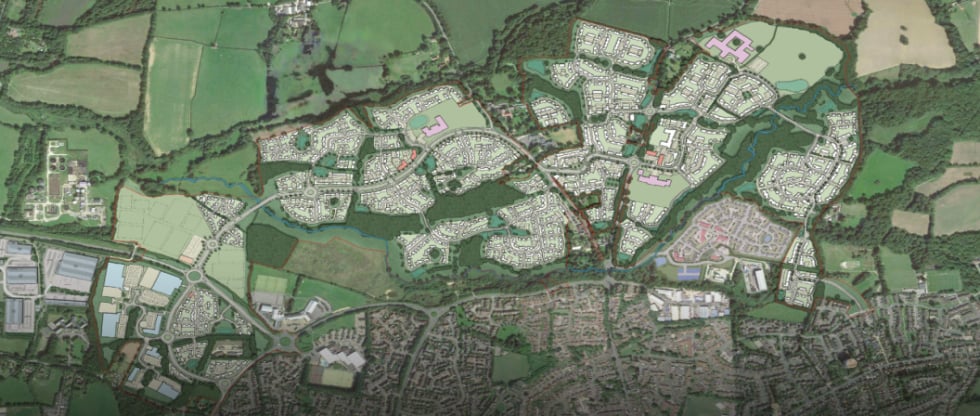The delivery of affordable housing in Ireland needs to be accelerated
The island of Ireland is facing an affordable housing crisis, but the economic restart after coronavirus means there is a chance to improve and speed up the planning and delivery process and link it to compact urban development and rail growth, says housing specialist John O’Regan.
Coming out of the pandemic, Ireland’s housing crisis, north and south, cannot be ignored. Yes, the possibility that more people will work, more often, from home opens exciting possibilities for different types of living away from urban centres, but our key workers must still be able to get to their jobs from affordable homes near suitable transportation.
And both the Republic of Ireland and Northern Ireland have a critical lack of affordable housing. By March 2019, there were 37,859 applicants on the social housing waiting list in Northern Ireland, of whom 26,387 were in “housing stress”. Resolving this is a key focus for the Northern Ireland government, with Belfast 2035 growth plans targeted at delivering 32,000 new homes. It is also a priority for the Irish government, with Project Ireland 2040 including plans to increase overall housing supply by 25,000 homes a year by the end of 2020, and then 30,000-35,000 annually up to 2027.

It will not be easy for public bodies to overcome their struggles in delivering housing. But these housing goals are a start, and by working closely with experienced project managers and using the full range of resources and consultants available, there is a way to achieve them. Moreover, a new approach to public transport and compact urban development could allow for housing to be better targeted in a joined-up approach that is badly needed. Project Ireland 2040 is demonstrating the right approach to rail and housing by aiming to secure over 50 per cent of future housing needs in existing built-up areas.
Procurement and planning must be streamlined
From the outset, the procurement process in the Republic of Ireland is complex and time-consuming. In the UK, established design team frameworks enable a streamlined procurement system for developing a brief, a business case or a feasibility study in a matter of weeks. In the Republic, that process can take months.
The planning process itself can also be slow, expensive and risky. Whilst changes in planning legislation to allow major housing developments go directly to the planning appeals board has brought more definition to some elements, the changes have also led to a steep rise in demands for judicial review. Given that a judicial review can take two years to proceed, this can seriously frustrate the planning process.
A Housing Task Force could resolve these issues, with a focus on project management, including both public and private sector team members. In the Republic of Ireland, there are many different agencies involved in the development of a single affordable residential scheme (starting with local authorities, An Bord Pleanála, Irish Water, Environmental Protection Agency and the Department of Housing, Local Government and Heritage), with each agency working to its own timescales, priorities and budgets. An empowered overarching Housing Task Force could focus on delivery and move blockers.

In planning, it is vital to keep the process moving, resolving bottlenecks and ensuring that an application doesn’t get stuck on someone’s desk. At AECOM, we have seen plenty of instances where good project management has helped with large-scale planning applications and streamlined processes. In Burgess Hill in southern England, for example, we are the lead consultant on the Northern Arc project, a major development being promoted by Homes England, that will deliver up to 3,500 new homes. Using our Masterplanning IE technology-based approach we achieved local authority approval for the masterplan and infrastructure delivery plan in under four months. Outline planning permission with a signed legal agreement was achieved in 16 months.
This accelerated programme was made possible by stakeholder co-operation and the creation of a masterplan that was supported by the gathering of all the necessary technical evidence. For example, flood risk and drainage technical expertise was deployed from the very start of the project. This allowed sustainable drainage systems to be integrated into the masterplan, mitigating the impact of climate change on fluvial flooding. A problem that might have reared its head after months or even years of planning work was resolved from the outset.
“In planning, it is vital to keep the process moving, resolving bottlenecks and ensuring that an application doesn’t get stuck on someone’s desk.”
Managing viability issues
In both Northern Ireland and the Republic, there are issues around the financial viability of projects. Even with planning permission achieved, the projected cost of development can wipe out a positive return from potential sale or rental revenues. Less than 30 per cent of projects granted planning permission through the Strategic Housing Development planning route have commenced on site.
Assessing viability has also been made more complex by the pandemic. Developers are having to work out whether more working from home is a long-term trend or whether people will return to the office within months. Making long-term decisions that will affect people for decades is a challenge when there are so many moving parts. An effective Housing Task Force would help address these viability issues.

Either way, it is likely that some workers will embrace home offices, and there is also a growing awareness that daily long-distance commutes are not environmentally desirable. Essentially, developers have to find a way of creating financially viable new homes close to urban centres for keyworkers while also finding a way to accommodate people who are able to live further away from their workplace.
One way of accelerating the development of affordable housing is to further explore the options for state-owned land that could be suited to quick development. This is advancing quickly with the establishment of the Land Development Agency in the Republic. The state land portfolio includes many sites with viability challenges. The challenges range from utility infrastructure deficits to significant protected structures including historic health and defence buildings. At face value, the development of these sites may seem challenging, but when broader economic benefits as well as the carbon benefits of retrofit versus new build and the long-term cost of the ‘do nothing’ option are considered, the argument for development is compelling. The AECOM Economics team has developed models for taking a broader view on such developments.
Resolving obstacles to implementation
After planning and viability comes actual implementation, and there are major challenges facing the Irish construction marketplace today. The industry lacks the resilience and scale needed to invest in modern methods of construction that are cheaper and faster, and reduce the carbon footprint of developments.
Government support could aid such innovation, as without it, the implementation of major schemes is very difficult. For the construction industry to grow as required, the government needs to establish a pipeline of upcoming work for those prepared to invest in their methods and materials. The key priority must be to develop effective masterplans that accelerate and improve every element of property development, enabling smooth implementation of affordable housing developments.
“The key priority must be to develop effective masterplans that accelerate and improve every element of property development, enabling smooth implementation of affordable housing developments.”
Affordable housing is too serious a problem to be allowed to drift on. The challenges faced by public bodies charged with delivering affordable housing are significant and public bodies often lack the expertise and experience to deliver the quantity of housing necessary in a relatively short period. But there are projects such as Burgess Hill that demonstrate a way forward, showing that the harnessing of the vast range of skills and resources available in the private sector can lead to effective collaboration and progress.







